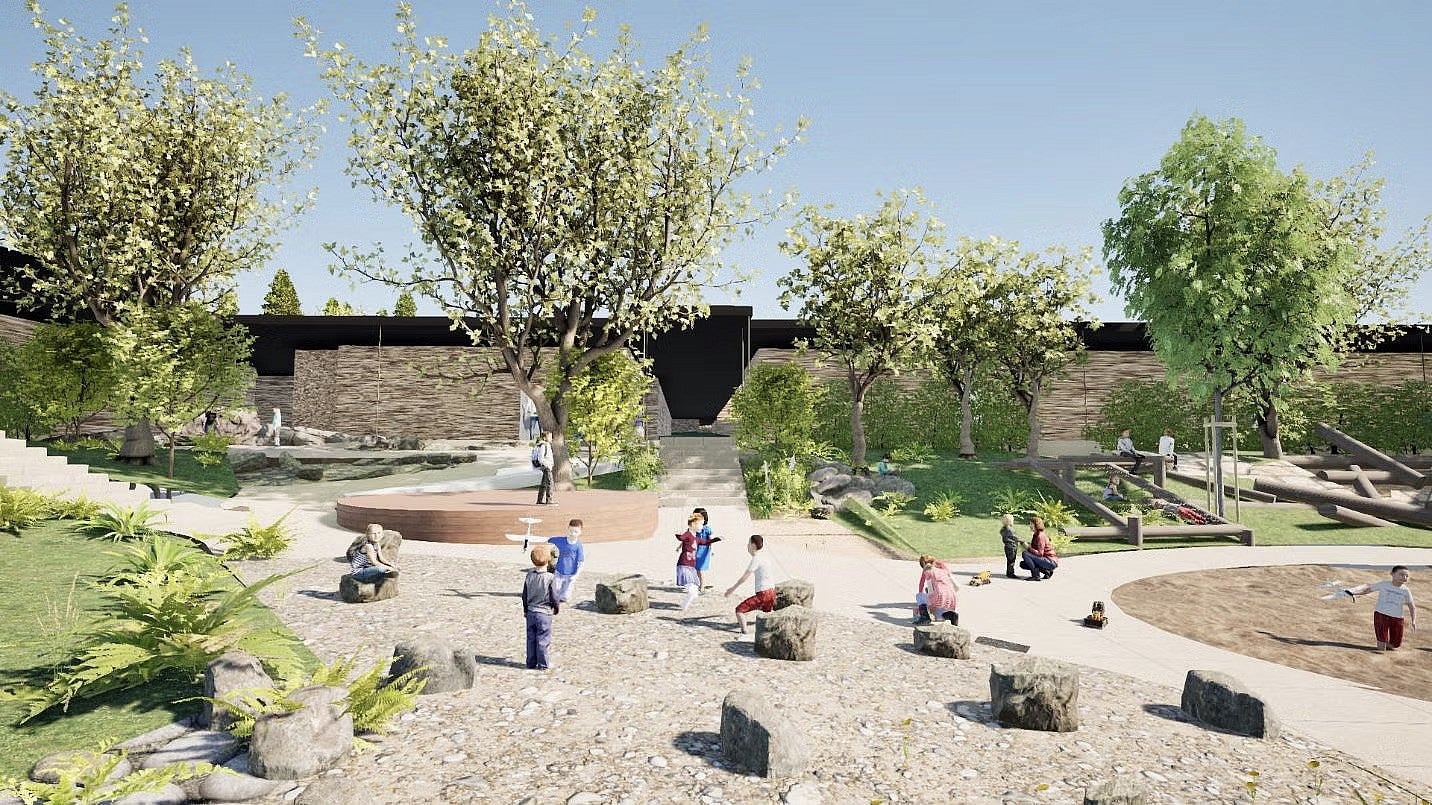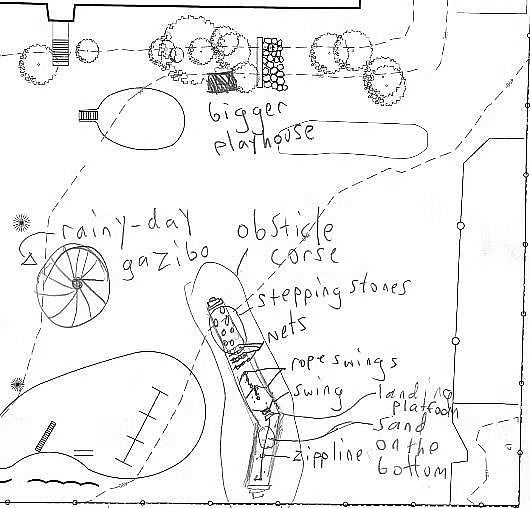
The College of Design and the School of Architecture & Environment is celebrating another top finish in the 11th annual Campus RainWorks Challenge, a national competition that engages college students in the design of green infrastructure to address stormwater pollution either on the campuses or with a neighboring K-12 school. Thirteen teams from 10 state and 12 academic institutions competed in this year's competition and showcased novel green infrastructure designs that showcased the environmental, health, economic, climate resiliency, and social benefits of green infrastructure.
Associate Professor of Landscape Architecture, Yekang Ko, was excited to celebrate another win for her students. After her student team first won in 2018, Ko led another interdisciplinary team of five students from the School of Architecture & Environment (SAE) and the School of Planning, Public Policy and Management (PPPM) including Giff Glastonbury (Master of Landscape Architecture), Katherine (Kat) Rola (Master of Community and Regional Planning), Katherine Harrison (Master of Landscape Architecture), Keith Stanley (Bachelor of Landscape Architecture), and Yeongseo Yu (PhD in Landscape Architecture).
"The EPA Campus RainWorks Challenge is a unique opportunity for students from all disciplines to come together and create innovative green infrastructure designs," explained Ko. "It not only showcases their talents in landscape design, urban planning, landscape performance analysis, and storytelling but also sparks exciting peer learning and meaningful community engagement with various stakeholders."

Stormwater run-off is seen as one of the one of the biggest sources of pollution affecting waterways and the EPA Campus RainWorks Challenge offers a chance for students to solve local challenges with inspired and creative thinking. The team's project presented a co-designed proposal for integrating stormwater management and nature play at the Village School, a local, Waldorf-based K-8 school in Eugene, Oregon. With an average rainfall of 70 inches, Eugene's fields and grassy areas are perpetually soggy and muddy during the heavy rain periods of the year. Titled Rainy Days, Nature’s Way: Embracing Stormwater and Play at the Village School, the proposed co-design sought to divert and handle stormwater run-off by included key green infrastructure elements including rain gardens, bioswales, a dry-creek infiltration trench and permeable material in play areas, and a schoolyard forest. The plan was impressive not just to the EPA, other community partners were pleased by the thorough and thoughtful design.
"I thought it was a very well-conceived project and is emblematic of the type of high caliber work the [school and] students consistently produce," explained Evan Elderbrock, Community Assistance Forester with the Oregon Department of Forestry, '23 PhD in Landscape Architecture, and a 2018 team member for the award-winning Good Drainage, Good Vibes Campus RainWorks Challenge project. "Seeing the talented students center the community engagement and perspective in the design while [winning this year's award] is the highest testament to Professor Ko and the program's expertise."
The diverse team of undergraduate and graduate students worked together with the community to produce a project that worked for the Village School's future needs and also deliver a stellar experiential education experience between two different schools.
"This was major hands-on, real-world experience," said Kat Rola. "We all brought to the table a unique set of skills and were an incredibly dynamic team that was able to lean into each other's strengths, thanks to the collaboration and trust we built at the beginning. One of the things we learn in PPPM is the idea of creating plans that do not sit on the shelf and it was surprising to see how similar my teammates [in SAE] were in their approach. Working [with these individuals] to see this [award-winning] plan come to reality was a unique opportunity to work across disciplines and build long-term connections in other departments."
The cross-departmental team was anchored by Glastonbury, who helped provide the preliminary context for the team project from his original work.
"I was already doing a lot of engagement at the [Village School for my master's project] and we ended up being able to form a team around the work," explained Glastonbury. "The work was at times a little of a stretch [due to the workload], but it was really rewarding to see our hard work recognized for the [Campus RainWorks] award from the EPA. Thanks to the work, I was able to dive a little deeper into my work and project and enjoyed another connection with the school that resulted in this project. It was also a good example of working with other disciplines and I really enjoyed working with the others. I brought the conceptual design but the others helped flesh out the rest of the project especially [Yeongseo] Yu who was able to help us with the stormwater numbers, and [Katherine] Harrison who without her the awesome video wouldn’t have been possible, it was a great win-win all around."
The first-place teams will receive a $30,000 student prize to be split among team members and a $5,000 faculty prize to support green infrastructure research and training. The outpouring of community support was crucial for the team's success.
"Our team sincerely thanks our community partners, including the Village School, the City of Eugene, and the State of Oregon Urban and Community Forestry Program, for their enthusiastic support," said Ko.
Read the Project Narrative on the EPA's announcement page, read about the competition and the winners at the EPA News Releases page.
